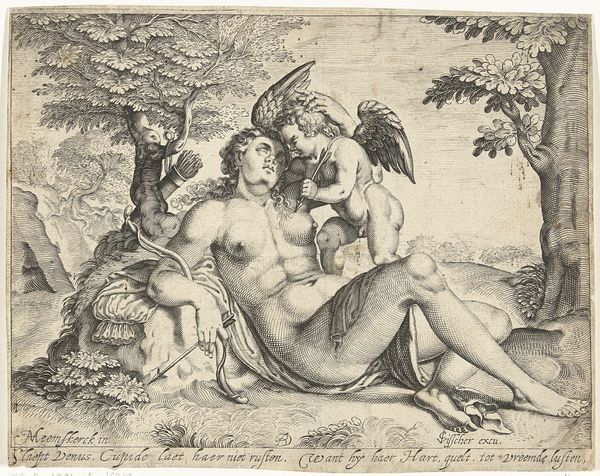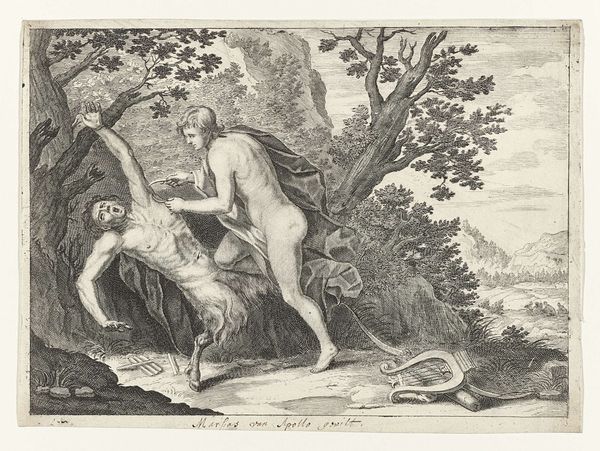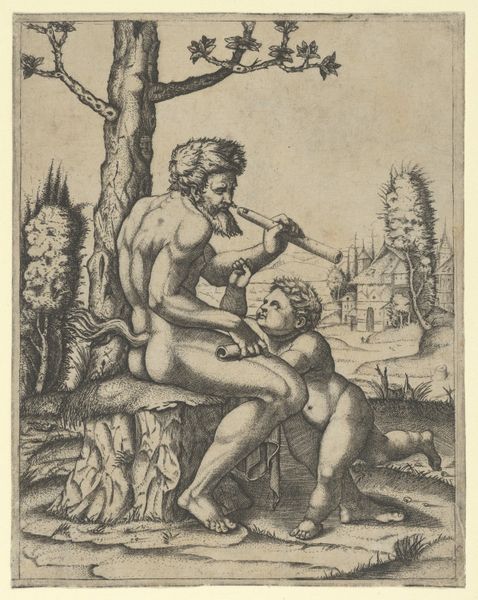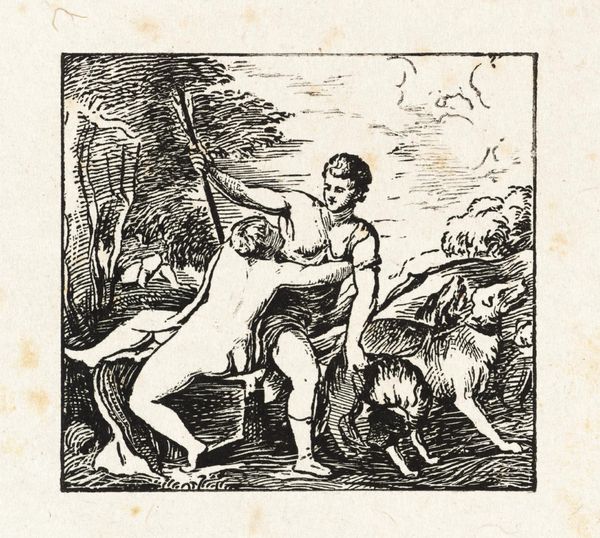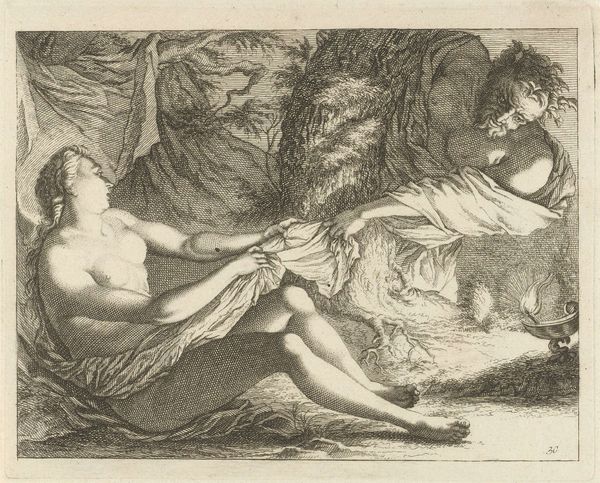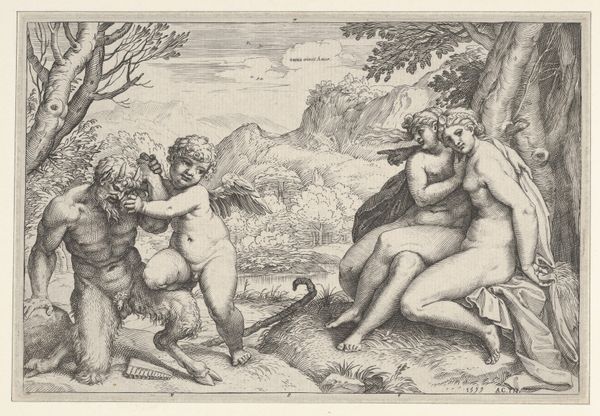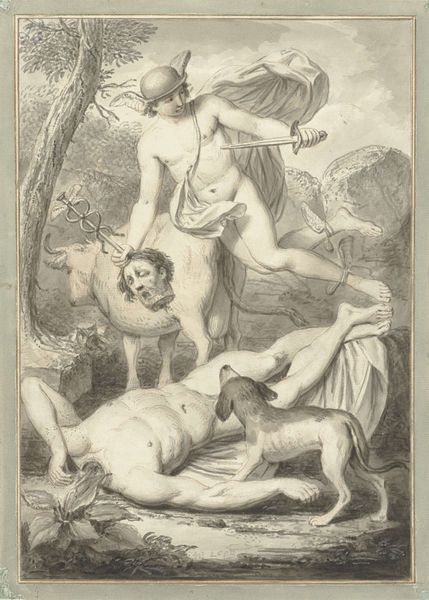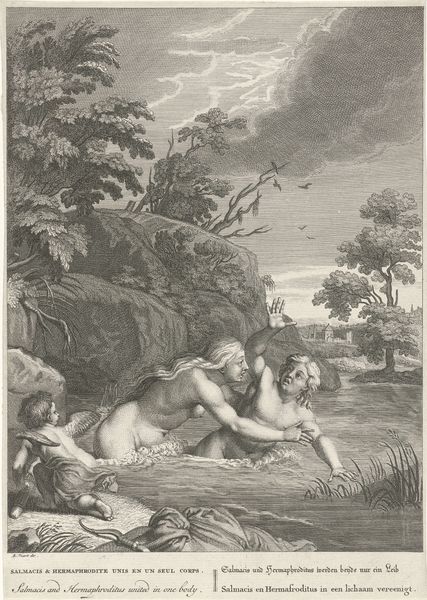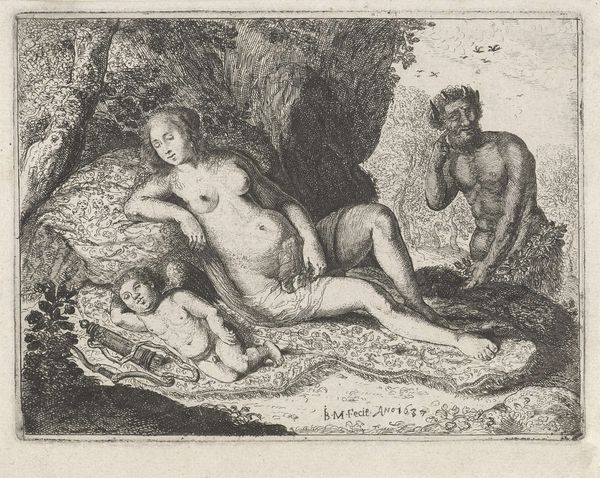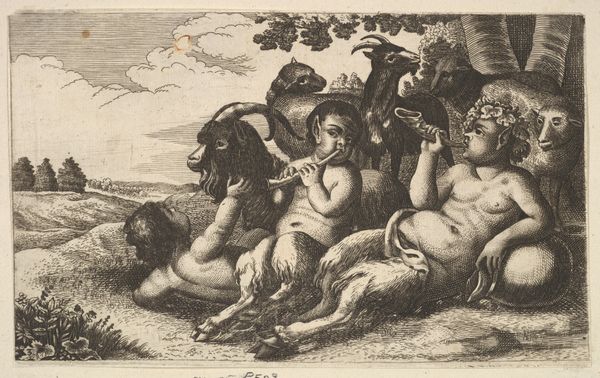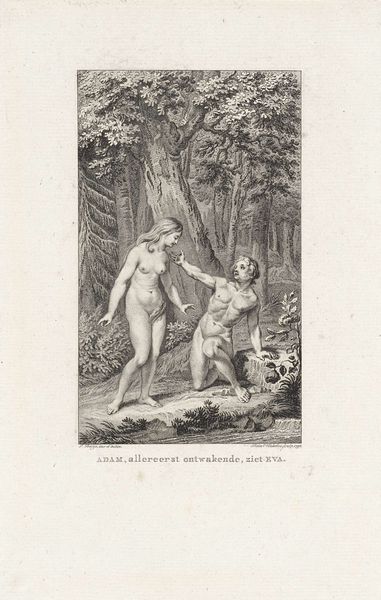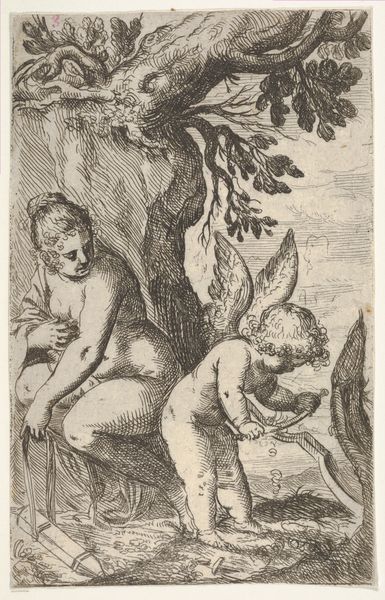
print, engraving
#
neoclacissism
#
aged paper
#
toned paper
# print
#
old engraving style
#
landscape
#
figuration
#
line
#
history-painting
#
engraving
Dimensions: 75 mm (height) x 94 mm (width) (bladmaal)
Curator: This is "Vignet til J. H. Wessels \"Samtlige skrifter," an engraving crafted in 1787 by Georg Christian Schule. It’s part of the collection at the SMK, Statens Museum for Kunst. Editor: The first thing that strikes me is its peculiar stillness, a sort of languid repose. There’s a child, seemingly unfazed, resting against a rather alarming disembodied lion’s head. Curator: It's fascinating how Schule employs a strictly Neoclassical line. Look at the cross-hatching technique, creating depth and volume with incredible precision. It's all about clarity of form. Editor: Yes, the technique is notable, but I am more drawn to what that lion head represents. In the symbolic language of the era, a lion often stood for courage or strength. Its decapitation, contrasted with the child's serenity, raises questions. Is it about the innocence overcoming a powerful force, maybe even a societal commentary on intellectualism versus brute power? Curator: Possibly. I tend to focus on the compositional balance. Notice how the landscape is structured. There is a division into distinct visual planes, anchoring the symbolic interaction between figure and object, as you say, with stability of arrangement. The figure in its classical idealism has also to be considered, leaning towards the conceptual and ideal versus direct allegorical reference. Editor: I see what you mean, however I disagree. The vignette teems with conventional symbolism. The lizard, perhaps a symbol of transformation or adaptation, slithers near the detached head and child who seems to have it contained or has disarmed the lion completely by having no reaction to the beheaded lion itself. This makes the symbol is more about the triumph over obstacles through intelligence or naivety. I do see that Neoclassical structure as more than mere structure – it enforces a narrative, creating layers for cultural understanding, right? Curator: Maybe so. It provides a very stable ground. Although, my reading would focus instead on that quality, the groundedness which helps reveal this historical turn toward balance in general. But in doing so, the Neoclassical choice speaks towards reason in that respect, rather than anything deeply encoded in memory. Editor: I suppose where we meet is somewhere along the plane that cuts into the past in order to reveal things about the present in which we're constantly engaging and rearranging symbols inherited or discarded and recovered... interesting stuff. Curator: Yes, exactly! The act of studying these works really helps unlock what they can continue to tell us.
Comments
No comments
Be the first to comment and join the conversation on the ultimate creative platform.
